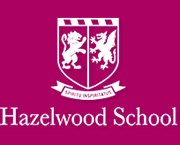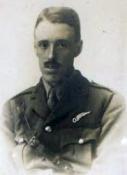
War Memorial
| Captain Dudley George Antoine ALLEN | |
|
4th (Extra Reserve) Battalion, Durham Light Infantry and 209 Squadron Royal Flying Corps Date of birth: 11th September 1890 Date of death: 8th October 1918 Killed in action aged 28 Buried at Triangle Cemetery, Inchy-En-Artois Row E Grave 4 |

|
| Dudley George Antoine Allen was born at 17, Church Road, Willesden in Middlesex on the 11th of September 1890 the second son of Arthur William Allen, a pictorial artist, and Emily (nee Last) Allen of 17, Church Road, Willesden, later of 118, Fordwych Road, Cricklewood, London NW2. He was christened at St Mary's Church, Willesden on the 26th of October 1890. He was educated at Merchant Taylor’s School from September 1903 to 1909 where he played rugby for the Rugby XV in his final year. The following year he won a Sir Thomas White Scholarship to St John’s College, Oxford where he achieved a second class degree in Math Moderations in 1911 and a BA second class degree in Modern History in 1913 following which he was preparing for the civil service examinations. He worked as a teacher at Hazelwood School from October 1914 to July 1915 when he left to join the army. He was commissioned as a probationary 2nd Lieutenant in the 4th (Extra Reserve) Battalion, Durham Light Infantry on the 13th of August 1915. He was seconded to the Royal Flying Corps and was appointed as a Flying Officer (Observer) on the 1st of April 1916. He served as an Observer throughout the Darfur campaign in East Africa before returning to England for pilot training. On the 29th of July 1916 he was posted to No. 1 School of Military Aeronautics and was then posted to 4 Reserve Squadron on the 31st of July. He obtained his Aero Certificate (No. 3631) at the Military School in Ruislip on the 14th of September 1916 flying a Maurice Farman Biplane. He was promoted to Temporary Lieutenant on the on the 1st of November 1916, with seniority from the 21st of November 1915, and was appointed as a Flying Officer on the 5th of November 1916, with seniority from the 1st of April 1916. He joined 28 Reserve Squadron on the same date. On the 18th of November 1916 he was posted to France where he served with 70 Squadron, flying Sopwith 1 1/2 Strutters in a long range reconnaissance role, until he returned to England on the 24th of June 1917. On the 5th of July 1917 he was posted to 67 Training Squadron and passed out as an instructor on scout machines at Gosport in September 1917. He was confirmed in the rank of Lieutenant on the 1st of July 1917 and was promoted to Temporary Captain and to Flight Commander on the 27th of August 1917. On the 2nd of April 1918 he was posted to the School of Navigation and Bombing Dropping and was then posted to 96 Squadron. On the 14th of May 1918 he was posted to 181 Squadron and on the 6th of June he was posted to 74 Training Squadron. He was posted to 134 Squadron on the 14th of May 1918 and on the 15th of July he joined 26 Training Depot Squadron at Edgell. In all he was qualified to fly the following aircraft: - Maurice Farman Short Horn, Avro, RE7, Sopwith two seater, BE2c, Nieuport two seater, Sopwith Scout and Sopwith Camel. He returned again to France on the 29th of September 1918 and joined 209 Squadron in the field on the 1st of October. He took off at 1pm on the 8th of October 1918 in Sopwith Camel E4423 for a low level patrol along with Camel H7278, flown by 2nd Lieutenant Hon. Richard Gerald Ava Bingham. At about 3pm the two aircraft were in collision to the west of Bourlon and both pilots were killed. His squadron commander wrote: - “A most gallant fellow and one of my best pilots.” The Hazelwood school magazine wrote: - "A fine soldier and an experienced airman, he earned the warm confidence of his commanding officers, both at the front and at home." He is commemorated on the war memorial Merchant Taylor’s School and on the memorial at St John's College, Oxford but is not currently commemorated on the memorial at Hazelwood School. |
|
Back